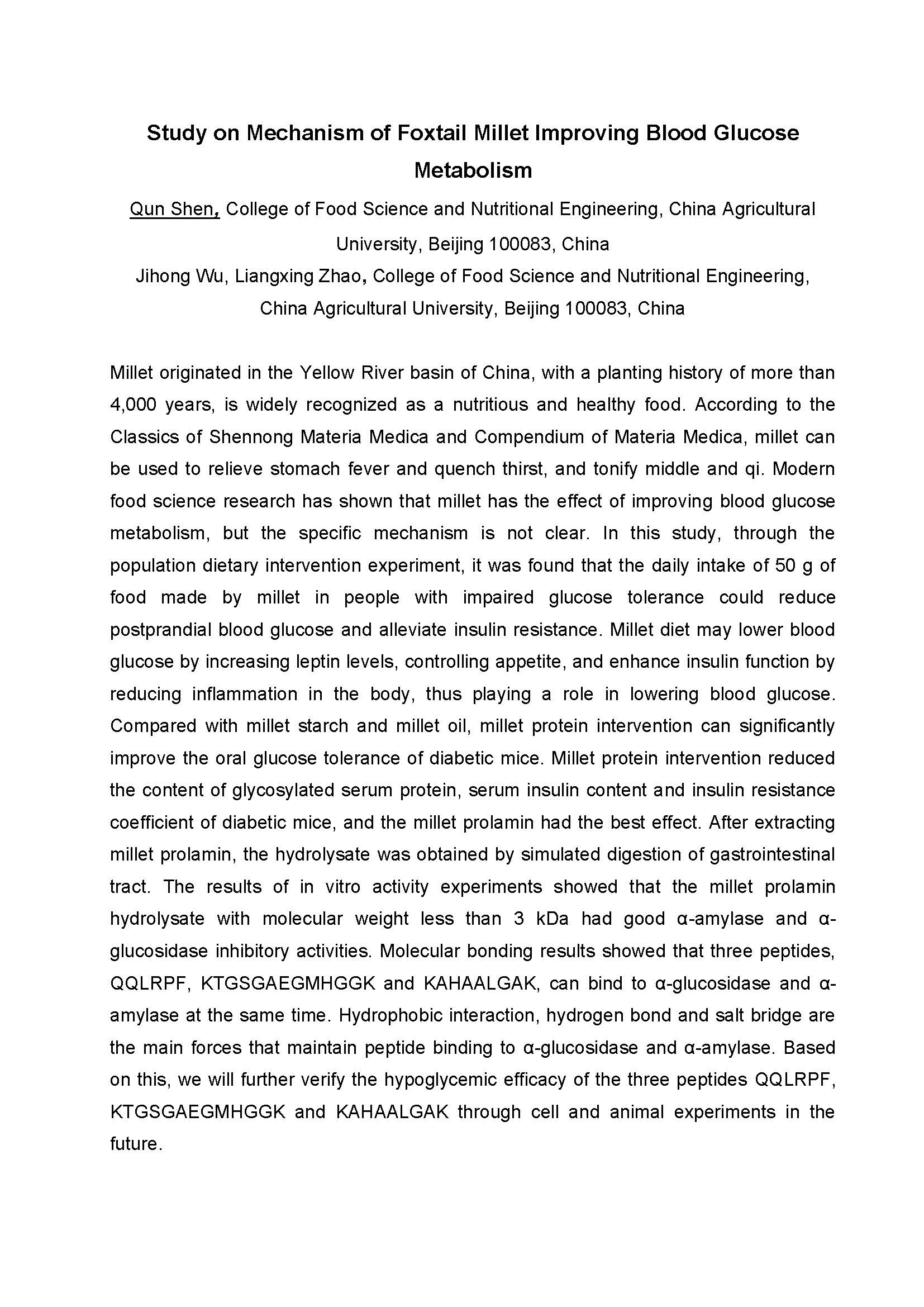Millet originated in the Yellow River basin of China, with a planting history of more than 4,000 years, is widely recognized as a nutritious and healthy food. According to the Classics of Shennong Materia Medica and Compendium of Materia Medica, millet can be used to relieve stomach fever and quench thirst, and tonify middle and qi. Modern food science research has shown that millet has the effect of improving blood glucose metabolism, but the specific mechanism is not clear. In this study, through the population dietary intervention experiment, it was found that the daily intake of 50 g of food made by millet in people with impaired glucose tolerance could reduce postprandial blood glucose and alleviate insulin resistance.
Millet diet may lower blood glucose by increasing leptin levels, controlling appetite, and enhance insulin function by reducing inflammation in the body, thus playing a role in lowering blood glucose. Compared with millet starch and millet oil, millet protein intervention can significantly improve the oral glucose tolerance of diabetic mice. Millet protein intervention reduced the content of glycosylated serum protein, serum insulin content and insulin resistance coefficient of diabetic mice, and the millet prolamin had the best effect. After extracting millet prolamin, the hydrolysate was obtained by simulated digestion of gastrointestinal tract. The results of in vitro activity experiments showed that the millet prolamin hydrolysate with molecular weight less than 3 kDa had good α-amylase and αglucosidase inhibitory activities. Molecular bonding results showed that three peptides, QQLRPF, KTGSGAEGMHGGK and KAHAALGAK, can bind to α-glucosidase and αamylase at the same time. Hydrophobic interaction, hydrogen bond and salt bridge are the main forces that maintain peptide binding to α-glucosidase and α-amylase. Based on this, we will further verify the hypoglycemic efficacy of the three peptides QQLRPF, KTGSGAEGMHGGK and KAHAALGAK through cell and animal experiments in the future.
